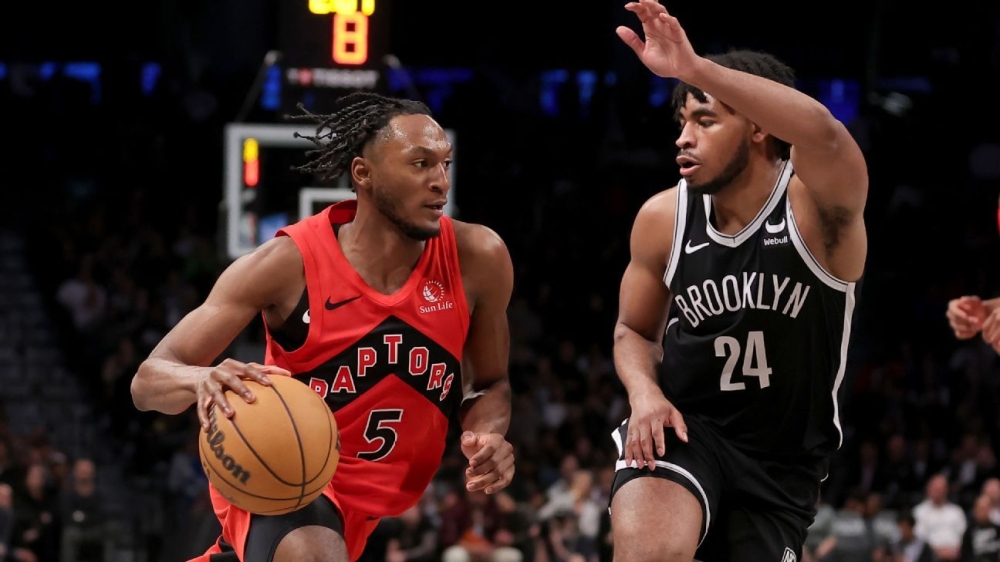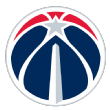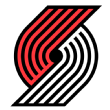What NBA trade deadline meant for future of seven lottery teams

How did a frenetic NBA trade deadline shake up the plans of seven lottery-bound franchises?
While about 75% of the league pushes for the postseason, a handful of rebuilding teams are already positioning themselves for June’s heralded draft, headlined by Duke’s Cooper Flagg and the Rutgers freshmen duo of Dylan Harper and Ace Bailey.
A few teams in this group are also expected to boast massive amounts of salary cap space (as much as $60 million) to chase stars this summer, during the 2025-26 season and beyond.
Let’s take stock of what each team did leading up to the Feb. 6 deadline, what it means for their offseason plans and which of their younger stars are expected to get extended run in the second half of the season. (We’re listing the teams in order by their lottery odds heading into Tuesday’s action, as projected by ESPN Analytics.)
Jump to a team:
Wizards | Jazz | Hornets | Pelicans
Nets | Raptors | Trail Blazers

 1. Washington Wizards (9-43)
1. Washington Wizards (9-43)
Chance at No. 1 pick: 14%
Chance at top-5 pick: 91.4%
What’s new after the trade deadline?
The Wizards made a series of moves designed to add to their stockpile of draft picks, including sending several second-rounders to the Philadelphia 76ers in exchange for a late first-rounder in 2026, and getting Memphis’ 2025 first-rounder — another late first selection — to take on Marcus Smart’s salary for next season. — Tim Bontemps
How have the Wizards’ draft plans changed?
The lottery-protected first from Memphis is highly likely to convey, giving the Wizards an additional first-round selection to add to their rebuild. The priority here is nailing their high-lottery pick, but the Wizards have the luxury of a long runway to figure it out. — Jeremy Woo
How could Washington approach the offseason and free agency?
Before the deadline, the Wizards were one of a handful of teams that projected to have salary cap space this summer. That changed when Washington prioritized draft assets over financial flexibility. The Wizards added two first-round picks, three seconds, the right to swap firsts, and 20-year-old rookie AJ Johnson, but at the expense of a combined $55 million owed to Smart and Khris Middleton next season. — Bobby Marks
Which player could shine in the second half?
Johnson, a rookie guard who played sparingly for a veteran Milwaukee Bucks club, figures to get time with Washington. He had his best game of the season — a 13-point showing with 4 rebounds and 4 assists in 29 minutes — this past week in a 125-96 loss to the Oklahoma City Thunder. Developing Bub Carrington and Bilal Coulibaly will be the priority, but Johnson will be in the mix. — Chris Herring
![What NBA trade deadline meant for future of seven lottery teams What NBA trade deadline meant for future of seven lottery teams 4 | ASL]() 2. New Orleans Pelicans (12-41)
2. New Orleans Pelicans (12-41)
Chance at No. 1 pick: 13.7%
Chance at top-5 pick: 71.9%
What’s new after the trade deadline?
The deadline represented the end of the Brandon Ingram-Zion Williamson era. Out of 441 regular-season games for the Pelicans, Ingram and Williamson were available for 154 as the club posted a record of 81-73 with them both on the court. That wasn’t enough bang for the team’s buck, making it increasingly clear the Pelicans couldn’t justify paying Ingram the max contract he sought. So, they traded him to the Toronto Raptors for Bruce Brown, Kelly Olynyk and draft picks. — Michael C. Wright
How have the Pelicans’ draft plans changed?
New Orleans will have to hope for a silver lining coming out of one of the most star-crossed, injury-laden NBA seasons in recent history. Owning their own pick, which could represent top lottery odds, gives them a safety net to add another young star in the offseason to replace the void left by Ingram. Apart from Flagg, Harper should pique interest as the type of shot-creating guard the Pelicans have needed for some time. — Woo
How could New Orleans approach the offseason and free agency?
The next step in New Orleans is determining how Williamson, 24, fits into the team’s future. When healthy, the forward is a franchise player. But Williamson is on pace to play fewer than 30 games for a third time in five seasons and is owed $125 million over the next three seasons. (Only $8 million is guaranteed.) The Pelicans also have CJ McCollum entering the last year of his contract. Not including a high lottery pick and potential free agent Bruce Brown, the Pelicans are only $17 million below the tax level. — Marks
Which player could shine in the second half?
The complementary player to pair with Williamson is already on the roster in Trey Murphy III, who is averaging 30.4 points over his past five games. New Orleans has its own pick in the highly anticipated 2025 draft, and given all the injuries and the fact the Pelicans won’t seriously compete for a postseason berth, it’s time to put the ball in Murphy’s hands and let him cook the rest of the season. — Wright
 3. Utah Jazz (12-40)
3. Utah Jazz (12-40)
Chance at No. 1 pick: 13.6%
Chance at top-5 pick: 69.9%
What’s new after the trade deadline?
The Jazz’s most important move was made a couple of weeks before the deadline when they acquired the Suns’ coveted 2031 first-round pick in exchange for a trio of picks likely to land in the 20s. Utah ended up with forward KJ Martin and a few second-round picks after serving as a facilitator in a couple of blockbuster deals. Somewhat surprisingly, Jazz veterans John Collins, Jordan Clarkson and Collin Sexton all remain in Utah. They each have a season left on their contracts, and the Jazz can continue listening to offers for them in the offseason. — Tim MacMahon
How have the Jazz’s draft plans changed?
They haven’t. The Jazz are angling for a high pick, and their moves are about adding future capital. If their Jan. 21 deal of three least-favorable firsts for Phoenix’s unprotected 2031 first is any indication, the Jazz are playing the longest game possible right now. Someone like, say, Flagg would go a long way in that regard. — Woo
How could Utah approach the offseason and free agency?
There will be speculation on the future of Lauri Markkanen now that the 2023 All-Star is trade eligible. But considering Utah is set up for the future in first-round picks (11 in the next seven years) and Year 4 of its rebuild is set to begin, Markkanen, who is under contract for the next four seasons, should be part of the future. There is a discussion to be had on how much Utah should prioritize cap flexibility in 2026. Barring a trade, Utah has $70 million in expiring contracts (Collins, Sexton, Clarkson and Martin) and are set up to have over $80 million in cap space in 2026. — Marks
Which player could shine in the second half?
Rookie Isaiah Collier, the No. 29 overall pick, had moved into a starting role weeks ago and will continue getting an extended run. With an eye on the lottery standings, the Jazz are certain to continue giving the veterans on the roster plenty of rest. There will be plenty of developmental opportunities for young players such as Collier, who has shown the most promise of the Jazz’s 2024 draft picks. — MacMahon
![What NBA trade deadline meant for future of seven lottery teams What NBA trade deadline meant for future of seven lottery teams 6 | ASL]() 4. Charlotte Hornets (13-38)
4. Charlotte Hornets (13-38)
Chance at No. 1 pick: 13.5%
Chance at top-5 pick: 67.4%
What’s new after the trade deadline?
A lot, but not as much as we expected. Charlotte traded promising third-year center Mark Williams to the Los Angeles Lakers for rookie Dalton Knecht and a pair of future first-rounders, but the deal came undone late Saturday, with sources suggesting Williams didn’t pass his physical. The news only makes things awkward for each club, but it also leaves the Lakers without a center acquisition. The Hornets did swing a pair of other deals: one involving wing Cody Martin and a second-round pick to acquire Jusuf Nurkic and a first-round pick from the Phoenix Suns, and one unloading big man Nick Richards that netted two second-round picks from the Suns. — Herring
How have the Hornets’ draft plans changed?
Charlotte’s willingness to trade away Williams, a quality lob threat who fit well with LaMelo Ball, might have signaled a more patient approach with the roster. With that trade having fallen apart, we’ll learn more about Charlotte’s timeline in the offseason. Some lottery luck could alter the trajectory of the franchise. The Hornets could conceivably opt to remake the team around a top talent such as Flagg or Harper and Brandon Miller, then explore moving Ball for future value. — Woo
How could Charlotte approach the offseason and free agency? When Ball signed a five-year, $204 million extension in 2023, the intention was that he would be the face of the franchise. But that new contract was under the previous ownership and management group. Now with a full year to evaluate, general manager Jeff Peterson will need to decide if Ball is a foundational player or someone they should explore moving for significant draft compensation and players. Ball has played like an All-Star but is on pace to appear in fewer than 50 games for a third straight season. The Hornets will enter the offseason well below the luxury tax and again should be a facilitator for teams looking to shed contracts. Their lone free agents are Tre Mann, Seth Curry and Taj Gibson. — Marks
Which player could shine in the second half?
Even with Williams awkwardly returning to the club, and with Nurkic on the team, two-way center Moussa Diabate, who has played very well in increased minutes over the past two months, signed a multiyear contract with Charlotte on Sunday. Diabate has started six games this season, played in 43 and is averaging career highs in points (4.7), rebounds (7.1), field goal percentage (.594) and minutes (19.0). — Herring
 5. Toronto Raptors (16-37)
5. Toronto Raptors (16-37)
Chance at No. 1 pick: 10.3%
Chance at top-5 pick: 43.2%
What’s new after the trade deadline?
Toronto made a big swing by acquiring Ingram for a package headlined by a top-four protected Indiana Pacers first-round pick in 2026. This was an example of “pre-agency,” with the Raptors choosing to pursue Ingram now, because they wouldn’t have the cap space to sign him this summer. The hope is Ingram, who is averaging more than 20 points for a sixth straight season, will be an ideal long-term frontcourt partner for rising star Scottie Barnes. — Bontemps
How have the Raptors’ draft plans changed?
The addition of Ingram, who hasn’t played since December because of a significant lower left ankle sprain, gives Toronto a boost. The question is whether his eventual return could cost the Raptors a few winning lottery combinations. The Raptors might not be bad enough for bottom-three odds regardless, so it might not make much of a difference in the big picture. — Woo
How could Toronto approach the offseason and free agency?
The Raptors’ big offseason addition probably occurred at the deadline when they traded for Ingram, a move that gives the Raptors five players earning more than $20 million. But, not including a potential new Ingram contract and a first-round pick, Toronto is projected to be $50 million below the luxury tax. — Marks
Which player could shine in the second half?
As for many rookies on lottery-bound teams, it’s safe to expect more of Ja’Kobe Walter down the stretch. The 6-foot-5 guard out of Baylor has shown some flashes in recent weeks, and while Ingram’s arrival adds another body to a crowded wing rotation, Toronto has every incentive to give Walter more seasoning over the final couple of months as it hopes for some lottery luck in May. — Bontemps
![What NBA trade deadline meant for future of seven lottery teams What NBA trade deadline meant for future of seven lottery teams 8 | ASL]() 6. Brooklyn Nets (19-34)
6. Brooklyn Nets (19-34)
Chance at No. 1 pick: 9.5%
Chance at top-5 pick: 39.3%
What’s new after the trade deadline?
Aside from reaching a buyout agreement with Ben Simmons, nothing really. For now, the team held onto forward Cameron Johnson, a popular trade target in the run-up to Feb. 6. The Nets did move veterans Dennis Schroder and Dorian Finney-Smith in the weeks prior, signaling a true race to the bottom in Brooklyn. — Herring
How have the Nets’ draft plans changed?
Brooklyn will still be focused on landing the best possible talent. The Nets have plenty of future picks in the hopper, including a league-high four firsts in this year’s draft, and not a strong enough roster to focus heavily on fit. How they balance the draft with their $60 million in cap space will be an interesting study. — Woo
How could Brooklyn approach the offseason and free agency?
No team this summer projects to have more cap space than Brooklyn, which will be linked to every notable free agent this offseason. But because the Nets are in the early stages of retooling their roster, do not expect a reunion with Kyrie Irving and James Harden. Though each can become a free agent this summer, both have player options. Unless the league’s next disgruntled superstar becomes available, Brooklyn should prioritize using room to sign free agents to bloated one-year contracts. They could also take an aggressive approach and sign restricted free agents to an offer sheet, such as Golden State Warriors forward Jonathan Kuminga. — Marks
Which player could shine in the second half?
Guard Cam Thomas, once back from his hamstring strain, is a 23-year-old to watch. There might not be a ton to learn about the professional bucket-getter at this point, but with the 25-point-per-game scorer becoming a restricted free agent this offseason, the Nets will be interested to see how he performs. And those results should help dictate his upcoming contract. — Herring
 7. Portland Trail Blazers (23-31)
7. Portland Trail Blazers (23-31)
Chance at No. 1 pick: 4.7%
Chance at top-5 pick: 20.1%
What’s new after the trade deadline?
Portland chose to stand pat at the trade deadline, something that has become a bit of a habit for the Trail Blazers in recent years. Despite having logjams at several positions, Portland heads into the stretch run with all of those battles in place — and, after wins in 10 of its past 12 games, perhaps even dreaming of an extremely unlikely push for a play-in spot. — Bontemps
How have the Blazers’ draft plans changed?
Portland’s recent hot streak vaulted it firmly out of the bottom six teams in the league and unexpectedly within reach of the play-in. A quiet deadline might not help the team’s chances at top odds, but the momentum the Trail Blazers caught with their young roster might be more valuable in the end than slightly better chances in the lottery — at least, that has to be the hope. — Woo
How could Portland approach the offseason and free agency?
The Trail Blazers are again posed with the question on how their veterans — Deandre Ayton, Anfernee Simons, Jerami Grant, Robert Williams III and Matisse Thybulle — fit into the team’s future. Four out of the five players (Grant has three more years after this season) are both extension eligible and set to enter the last year of their contracts. Shaedon Sharpe’s next contract will play a role in how much flexibility the Trail Blazers have in 2026-27. Sharpe is rookie extension eligible starting on the day after the NBA Finals conclude. Portland has 13 players under contract for next season and is $17 million below the luxury tax. — Marks
Which player could shine in the second half?
This should be 2024 first-round pick Donovan Clingan, who has proved to be an impressive presence in the paint, averaging 1.5 blocks despite playing 15 minutes a game. But with Ayton and Williams still on the roster after the deadline, Clingan could remain in a partial role down the stretch in Portland. — Bontemps
Source: espn.com

 2. New Orleans Pelicans (12-41)
2. New Orleans Pelicans (12-41) 4. Charlotte Hornets (13-38)
4. Charlotte Hornets (13-38) 6. Brooklyn Nets (19-34)
6. Brooklyn Nets (19-34)